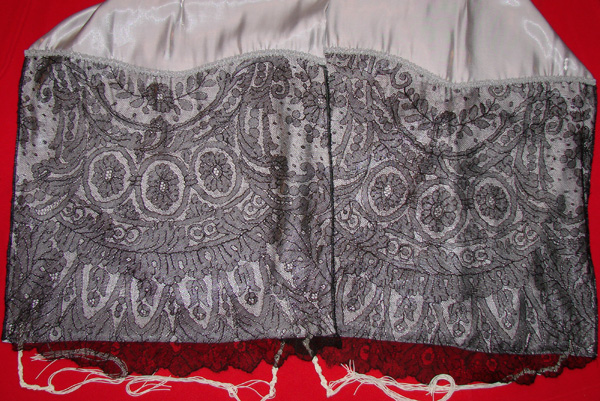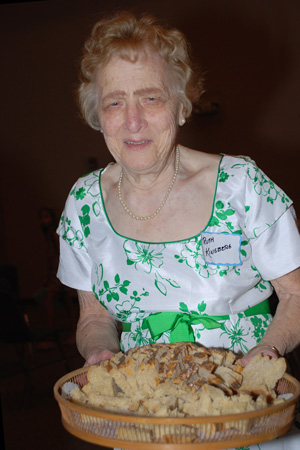I was given a precious gift last fall. It was a circular piece of black lace.
“My grandma wore it to synagogue,” explained Ruth Kingberg.
Ruth Kingberg was born in Germany in the 1920’s. Her family had lived in the German village of Göppingen for many generations.
Her grandmother, Rosalie Dörzback, had worn the black shawl to services at the same synagogue Ruth went to as a child.
The shawl dated back to the second half of the nineteenth century, to a life and a culture, and a Jewish community that was utterly destroyed by the rise to power of Adolf Hitler in the 1930’s. Ruth had kept her grandmother’s shawl carefully folded and wrapped in tissue paper and plastic for many years.
She wanted me to make myself a dress, she explained. She hoped that I could use the shawl as part of that dress, and wear what I made to the party my congregation, Temple Or Olam, had planned to celebrate my ordination as rabbi.
I went to the fabric store, bought a pattern and a brilliant turquoise fabric to lay underneath the black lace. Then I unwrapped and spread out the lace.
But before I could lay out the dress pattern, I noticed the holes. Here and there the thin threads had broken and frayed.
I called Ruth. I explained.
She was heartbroken. “I wouldn’t have given it to you if I’d known,” she said.
“Ruth,” I said, “Do not worry.”
I knew what I needed to do as soon as I’d seen the holes in the lace.
Ruth’s family made it out of Germany at great risk and terrible loss. Ruth has a perfume bottle given to her by a childhood friend who was deported east. Her beloved friend did not survive the Holocaust. Neither did most of the other children of her little school. Ruth still has a picture of herself with those children, aged six to thirteen. Most were murdered in the gas chambers.
The black lace she gave me had survived, but the holes in the lace spoke of all that had not.
I went back to the store. I came home and laid the fabric over a silver gray shawl that glimmered softly underneath the curlicues, the rich black flowers unfolding across the woven threads.
I left one hole in the lace. You will not see it unless I point it out. But it is there, to remind me.
A small piece of lace was left to sew onto a kippah, a little head covering many Jews wear during prayer.
The night of the celebration, I set the kippah on my head. I drew the silver-grey shawl over my shoulders. The black lace covers each end, swirling across the fabric.
Rosalie’s shawl is still worn over the shoulders of a Jewish woman. With it, I carry the knowledge of German Jews who once lived lives of hope and promise.
Her prayer shawl sits lightly on my shoulders, though it has taken such a different form. Rosalie’s memory blesses my own efforts to continue to build a Jewish congregation where there once was none, to nurture Jewish life here in Cabarrus County and its environs. Her granddaughter is a founding member of Temple Or Olam.
May Rosalie’s memory be for a blessing. May Ruth’s gift be one I hand on someday to a Jewish woman of a generation perhaps yet to be born. May she remember, too, and resolve to hope.
[This piece was printed in the Neighbors section of the Charlotte Observer on May 8, 2011]








